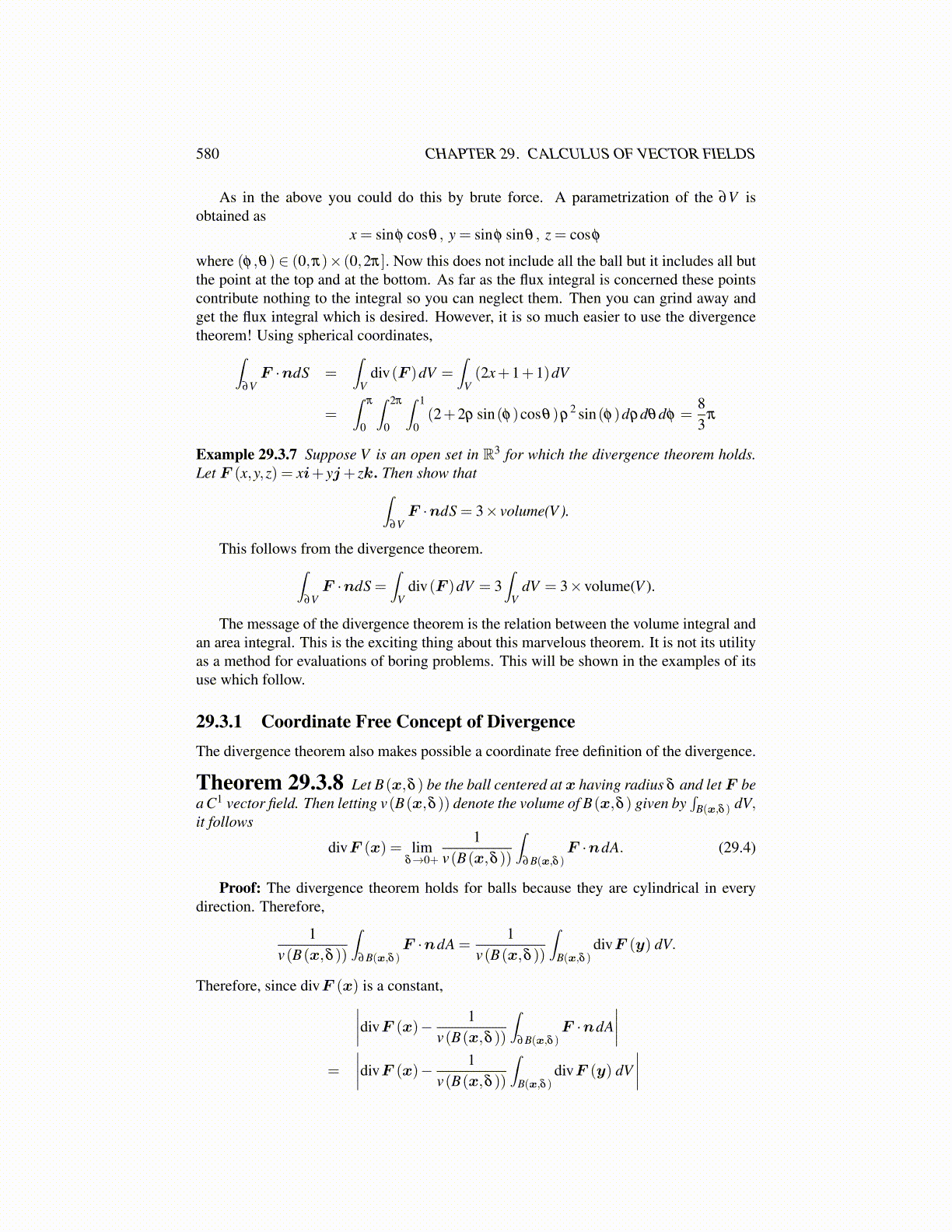
580 CHAPTER 29. CALCULUS OF VECTOR FIELDS
To see this is so, take an arbitrary V for which the divergence theorem holds. Then thetime rate of change of the mass in V is
∂
∂ t
∫V
ρ (y, t) dV =∫
V
∂ρ (y, t)∂ t
dV
where the derivative was taken under the integral sign with respect to t. (This is a physicalderivation and therefore, it is not necessary to fuss with the hard mathematics related tothe change of limit operations. You should expect this to be true under fairly general con-ditions because the integral is a sort of sum and the derivative of a sum is the sum of thederivatives.) Therefore, the rate of change of mass ∂
∂ t
∫V ρ (y, t) dV , equals
∫V
∂ρ (y, t)∂ t
dV =
rate at which mass enters︷ ︸︸ ︷−∫
∂Vρ (y, t)v (y, t) ·ndA+
∫V
f (y, t) dV
= −∫
V(∇ · (ρ (y, t)v (y, t))+ f (y, t)) dV.
Since this holds for every sample volume V it must be the case that the equation ofcontinuity holds. Again, there are interesting mathematical questions here which can beexplored but since it is a physical derivation, it is not necessary to dwell too much on them.If all the functions involved are continuous, it is certainly true but it is true under far moregeneral conditions than that.
Also note this equation applies to many situations and f might depend on more thanjust y and t. In particular, f might depend also on temperature and the density ρ . Thiswould be the case for example if you were considering the mass of some chemical and frepresented a chemical reaction. Mass balance is a general sort of equation valid in manycontexts.
29.4.5 Balance of MomentumThis example is a little more substantial than the above. It concerns the balance of mo-mentum for a continuum. To see a full description of all the physics involved, you shouldconsult a book on continuum mechanics. The situation is of a material in three dimensionsand it deforms and moves about in three dimensions. This means this material is not a rigidbody. Let B0 denote an open set identifying a chunk of this material at time t = 0 and letBt be an open set which identifies the same chunk of material at time t > 0.
Let y (t,x) = (y1 (t,x) ,y2 (t,x) ,y3 (t,x)) denote the position with respect to Cartesiancoordinates at time t of the point whose position at time t = 0 is x = (x1,x2,x3). Thecoordinates x are sometimes called the reference coordinates and sometimes the materialcoordinates and sometimes the Lagrangian coordinates. The coordinates y are called theEulerian coordinates or sometimes the spacial coordinates and the function (t,x)→ y (t,x)is called the motion. Thus
y (0,x) = x. (29.9)
The derivative,D2y (t,x)≡ Dxy (t,x)
is called the deformation gradient. Recall the notation means you fix t and consider thefunction x→ y (t,x), taking its derivative. Since it is a linear transformation, it is repre-